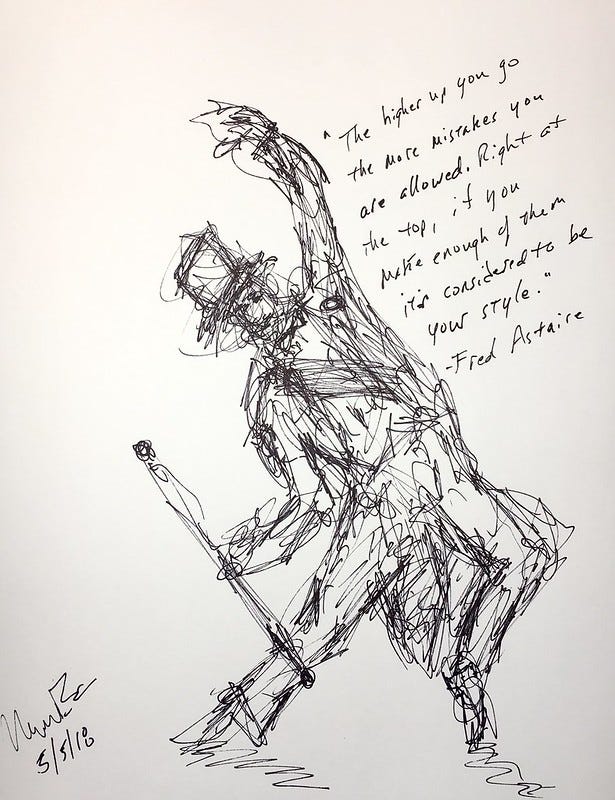I’ve been thinking about the idea of narrative identity for a while, and this weekend I was spending some time chasing this idea down a rabbit hole. I wanted to just share a couple of thoughts with you this week as a result.
A life story is an individual’s internalized narrative rendering of his or her life in time, entailing the reconstructed past, perceived present, and anticipated future. More than traits, motives, values, and so on, life stories function to establish identity…1
I really like the McAdams quote above. Our life stories are more than just a recitation of dates, places, the people who were there, and the things that happened. We edit, shape, and delete things in our timeline of experience to extract from it the life story narrative. Most of the things that we do and/or have happen to us are irrelevant to our narrative and they won’t be committed to our long-term memory. McAdams goes on to say,
Individuals’ life stories, or identities, are based on the facts of their lives, but life stories are not synonymous with those facts, because making one’s life into a story is as much an act of imagination as is the production of fiction, poetry, and art.
Our life story is our answer to who we are, why we are here, and what we are supposed to do.
At each stage of life, what we are supposed to do varies. Erik Erikson developed a theory of life stages in the 50’s, with each stage having a healthy adaptive response that leads to fulfillment and success in moving to the next stage2. For example, the developmental task of adolescence is to begin finding oneself, in early adulthood, to find a partner and establish a life separate from one’s parents, and in adulthood, generativity. Failure to accomplish each life-stage’s tasks leads to a lack of fulfillment and flourishing.
I am particularly interested in generativity, since I am in lat(er) adulthood. In a different paper, McAdams, et al, define generativity as:
Generativity refers to the adult's concern for and commitment to the well-being of the next generation, as manifested in parenting, teaching, mentoring, and other behaviors and involvements that aim to contribute a positive legacy that will outlive the self…3
I think generativity, as defined, is a function of adulthood because in earlier stages, one does not really have resources (or wisdom) to work on problems of helping the next generation. Generativity is consistent with the Worthy Life Model that I have been defining, since it is closely related to the 3Cs of Meaning - specifically contribution and connection, but potentially to competence as well. Generativity is a concern for something beyond the self. Indeed, in Erikson’s model, failure to adapt to the adulthood stage is characterized by stagnation and self-absorption.
A healthy progression of life story through life-stages then involves adapting to each stage by accomplishing the tasks of the life-stage. A healthy story in adulthood is one that is outwardly focused, supporting a purpose greater than the self. Development of the self is an appropriate focus of earlier stages, through adolescence and into early adulthood, but the transition to adulthood is characterized by an outward turn and thinking about what our existence means in terms of what we will leave behind, broadly defined.
Next time I want to talk about McAdam’s work showing that generativity in one’s life story narrative is protective against bad events.
McAdams, D. P., Reynolds, J., Lewis, M., Patten, A. H., & Bowman, P. J. (2001). When bad things turn good and good things turn bad: Sequences of redemption and contamination in life narrative and their relation to psychosocial adaptation in midlife adults and in students. Personality and social psychology bulletin, 27(4), 474-485.
Orenstein, G. A., & Lewis, L. (2022). Eriksons stages of psychosocial development. In StatPearls [Internet]. StatPearls Publishing.
McAdams, D. P., Diamond, A., de St Aubin, E., & Mansfield, E. (1997). Stories of commitment: The psychosocial construction of generative lives. Journal of personality and social psychology, 72(3), 678.




